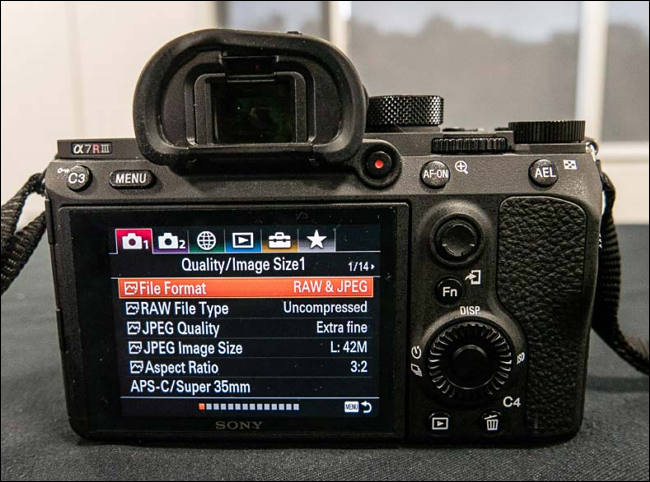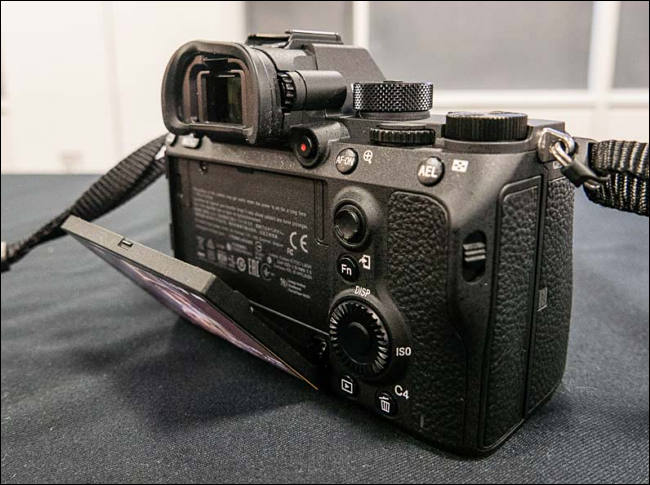
-
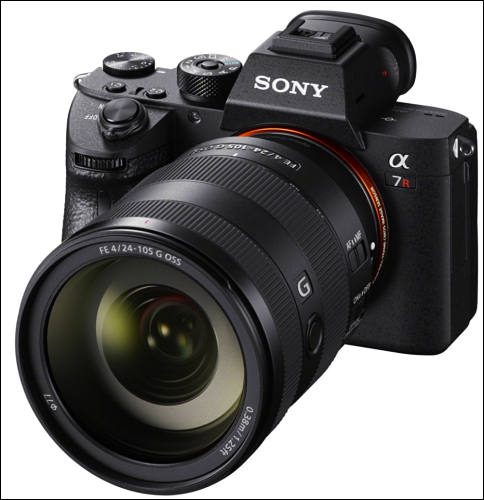
- 42.4MP 35mm full frame Exmor R CMOS back-illuminated image sensor
- 4K video high resolution motion images with 5K (15MP) oversampling
- 4K only at 30fps and 24fps, 1080p up to 120fps
- Support of HLG (Hybrid Log-Gamma)
- Support real-time HDR workflow
- S-LOG3 gamma for 14-stops of dynamic range in video
- 15 stops Dynamic Range raw stills (actual number can apply only to downsampled photos actually, can be marketing only)
- 10 frames per second shooting with autofocus / auto exposure tracking mode
- 2 times better autofocus, especially eye AF
- 399 focal plane phase detection focus from A9
- No optical low pass filter
- 3inch 1.44m dot tilting touch-screen
- 3686K dot electronic viewfinder (EVF)
- 5-axis in-camera image stabilization to 5.5 stops
- 14bit RAW also works for high fps modes
- Dual SD cards slots
- Dust and moisture resistant
- Battery capacity increased 2.2x times
- USB 3.1 Gen 1 USB-C port
- You can externally power the camera via USB
- Time lapse mode excluded fully to sell it as separate app later
- Multiple photo combine mode that uses 5-axis sensor stabilizer for super resolution images - around 99.44mp.
- $3,199.99, available end of November
- Preorders at
- US - https://www.amazon.com/Sony-42-4MP-Full-frame-Mirrorless-Interchangeable-Lens/dp/B076TGDHPT/
- US - https://www.bhphotovideo.com/c/product/1369441-REG/sony_ilce7rm2_b_alpha_a7r_iii_mirrorless.html
- DE - https://www.calumetphoto.de/product/Sony-Alpha-7R-III-Body/SONA7RIII
- UK - https://www.wexphotovideo.com/sony-a7r-iii-digital-camera-body-1643219/
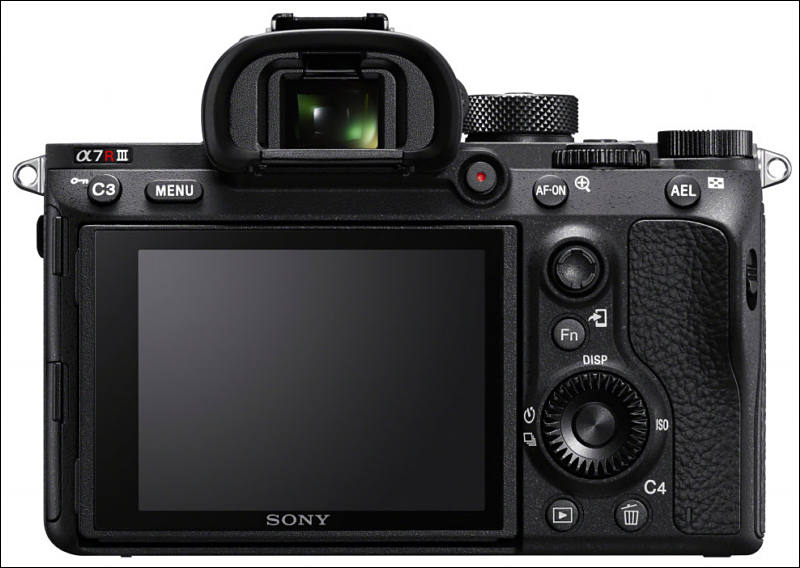

 sa157.jpg667 x 392 - 38K
sa157.jpg667 x 392 - 38K
 sa160.jpg484 x 500 - 35K
sa160.jpg484 x 500 - 35K
 sa161.jpg800 x 613 - 60K
sa161.jpg800 x 613 - 60K
 sa162.jpg800 x 463 - 44K
sa162.jpg800 x 463 - 44K
 sa163.jpg800 x 568 - 56K
sa163.jpg800 x 568 - 56K -
A lot to like, but 8 bit or 10 bit video ? Based upon the spec sheets it's only 8 bit, and SONY seems strange claiming HDR anything...
https://www.sony.com/electronics/interchangeable-lens-cameras/ilce-7rm3/specifications
HDMI Output: 3840 x 2160 (25p), 1920 x 1080 (50p), 1920 x 1080 (50i), 1920 x 1080 (24p), 1920 x 1080 (60p), 1920 x 1080 (60i), 3840 x 2160 (30p), 3840 x 2160 (24p), YCbCr 4:2:2 8bit / RGB 8bit
Recording Format: XAVC S, AVCHD format Ver. 2.0 compliant Video Compression: XAVC S: MPEG-4 AVC/H.264, AVCHD: MPEG-4 AVC/H.264
Image Size (pixels), NTSC XAVC S 4K: 3840 x 2160 (30p, 100 M), 3840 x 2160 (24p, 100 M), 3840 x 2160 (30p, 60 M), 3840 x 2160 (24p, 60 M) XAVC S HD: 1920 x 1080 (120p, 100 M), 1920 x 1080 (120p, 60 M), 1920 x 1080 (60p, 50 M), 1920 x 1080 (30p, 50 M), 1920 x 1080 (24p, 50 M), 1920 x 1080 (60p, 25 M), 1920 x 1080 (30p, 16 M) AVCHD: 1920 x 1080 (60i, 24 M, FX), 1920 x 1080 (60i, 17 M, FH)
-
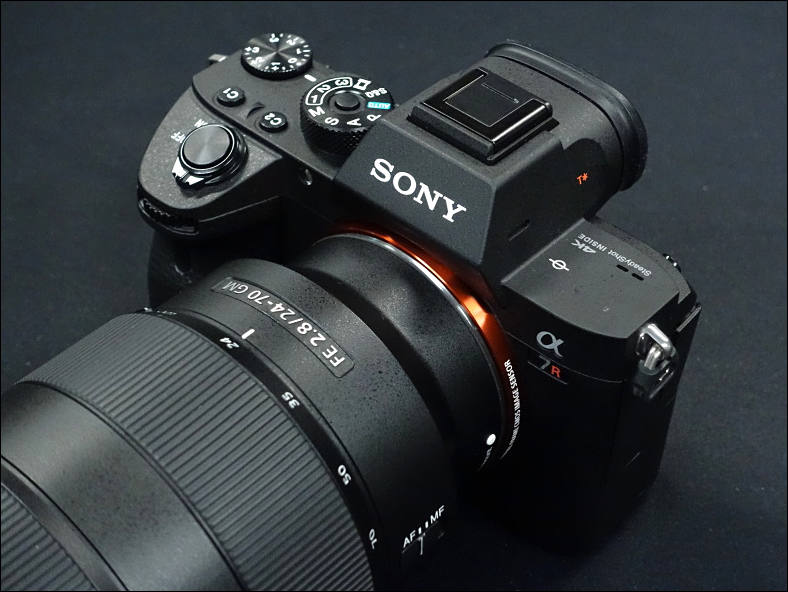
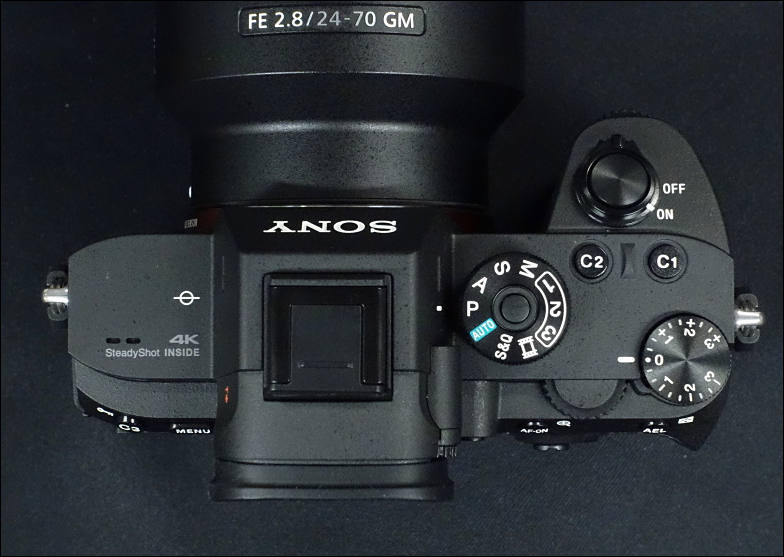
Next to predecessor
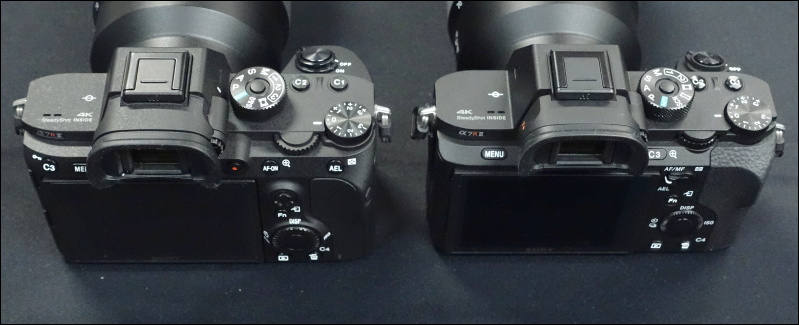

 sa166.jpg788 x 592 - 62K
sa166.jpg788 x 592 - 62K
 sa168.jpg784 x 557 - 56K
sa168.jpg784 x 557 - 56K
 sa164.jpg799 x 325 - 37K
sa164.jpg799 x 325 - 37K -
"14-15 stops" be damned, it looks like they handicapped an otherwise nice camera with regard to true HDR video via lack of HEVC encoding or 10 bit output even over HDMI output... disappointing, but not unexpected
-
Best Sony PR department performance I saw
Lot of bloggers talking shit at hotel and retelling you specs
-
PR
Sony today announced an impressive addition to their full-frame mirrorless camera line-up, the α7R III (model ILCE-7RM3).
Thanks to an evolutionary leap in image processing power and efficiency, the new α7R III combines a high-resolution 42.4 MPi back-illuminated Exmor R CMOS image sensor with impressive shooting speeds at up to 10 fpsii with full AF/AE tracking, as well as beautiful image and 4K6 video quality, wide 15-stop9 dynamic range, high sensitivity with noise reduction of almost a full stop4 and more. With these immense capabilities and a compact, lightweight body, it’s an extremely versatile tool for photographers, videographers, multi-media creators and all other types of professionals that demand reliability, flexibility and versatility.
A New Level of Image Quality
The 42.4MP high-resolution, back-illuminated Exmor R CMOS image sensor utilises a gapless on-chip lens design and AR (anti-reflective) coating on the surface of the sensor’s seal glass to dramatically improve light collection efficiency, resulting in high sensitivity with low-noise performance and wide dynamic range.
Sony’s new α7R III also features a new front-end LSI that effectively doubles the readout speed of the image sensor, as well as an updated BIONZ X™ processing-engine that boosts processing speed by approximately 1.8 times compared to the α7R II. These powerful components work together to allow the camera to shoot at faster speeds while also enabling its impressive ISO range of 100 – 32000 (expandable to ISO 50 – 102400 for still images) and massive 15-stop[ix] dynamic range at low sensitivity settings. This ensures outstanding overall performance at all settings and in all shooting conditions.
This new full-frame model was built without an optical low pass filter to maximise resolution, while also having the ability to output 14 bit RAW format even when shooting in silent or continuous mode. The camera is equipped with an innovative 5-axis optical image stabilisation system that has been fine-tuned to support its high-resolution shooting capacity, resulting in a 5.5 stepv shutter speed advantage, the world’s highest[x] compensation performance for an image stabilisation system. There is also a new low-vibration shutter that reduces vibration and image blur in all modes, including the high speed 10 fps shooting, as well as several advancements in accurate colour reproductions of skin tones.
High-Performance AF and AF/AE Tracking at up to 10 fps
The innovative new α7R III full-frame mirrorless camera is equipped with a refined image processing system that allows it to shoot full 42.4MP images at up to 10 fps with continuous, accurate AF/AE tracking for up to 76 JPEG / RAW images or 28 uncompressed RAW images[xi]. This high speed 10 fps mode is available with either a mechanical shutter or a completely silent shooting[xii], adding to the immense flexibility of the camera. The camera can also shoot continuously at up to 8 fps[xiii] in live view mode with minimal lag in the viewfinder or LCD screen. These high speed options ensure that fast moving subjects can be captured with extreme accuracy and incredible image detail.
For added convenience, while large groups of burst images are being written to the memory card, many of the cameras key functions are operable, including access to the ‘Fn’ (Function) and ‘Menu’ buttons, image playback and several other menus and parameters[xiv] including image rating and other functions that facilitate on-location image sorting.
Additionally, if there is fluorescent or artificial lighting present in a shooting environment, users can activate the Anti-flicker function to allow the α7R III to automatically detect frequency of the lighting and time the shutter to minimise its effect on images being captured. This minimises any exposure or colour anomalies that can sometimes occur at the top and bottom of images shot at high shutter speeds.
The upgraded focusing system of the α7R III is comprised of 399 focal-plane phase-detection AF points that cover approximately 68% of the image area in both the horizontal and vertical directions. There is also 425 contrast AF points, an increase of 400 points compared to the α7R II. This advanced system delivers AF acquisition in about half the time as the α7R II in low-light conditions, with tracking that is approximately 2 times more accurate as well. The acclaimed Eye AF feature is also approximately 2 times more effective, and is available when utilising Sony’s A-mount lenses with an adapter.[xvi]
Additional improvements in focusing flexibility include AF availability in Focus Magnifier mode, focal-plane phase-detection AF support when using A-mount lenses, an ‘AF On’ button, a multi-selector or ‘joystick’ for moving focusing points quickly, flexible touch focus functionality and much more.
High Quality 4K for the Video Professionals
The new α7R III is exceptionally capable as a video camera, offering 4K (3840×2160 pixels) video recording across the full width of the full-frame image sensor. When shooting in Super 35mm format, the camera uses full pixel readout without pixel binning to collect 5K[xviii] of information, oversampling it to produce high quality 4K footage with exceptional detail and depth.
A new HLG (Hybrid Log-Gamma)[xix] is available on the α7R III that supports an Instant HDR workflow, allowing HDR (HLG) compatible TV’s to playback beautiful, true-to-life 4K HDR imagery. Further, both S-Log2 and S-Log3 are available for increased colour grading flexibility. The camera can also record Full HD at 120 fps at up to 100 Mbpsvi, allowing footage to be reviewed and eventually edited into 4x or 5x slow motion[xx] video files in Full HD resolution with AF tracking.
Build, Design and Customization for Professionals
Sony’s newest full-frame camera is equipped with a variety of enhanced capabilities that give it a true professional operational style. These include dual media slots, with support in one slot for UHS-II type SD memory cards. Users have a variety of options for storing their content, including separate JPEG / RAW recording, separate still image / movie recording, relay recording and more. Battery life has been greatly extended as well, as the new camera utilises Sony’s Z series battery that have approximately 2.2 times the capacity of the W series battery utilised in the α7R II.
The α7R III features an upgraded high-resolution, high-luminance Quad-VGA OLED Tru-Finder™ with approximately 3,686k dots for extremely accurate, true-to-life detail reproduction. The Tru-Finder, also found in the acclaimed Sony α9 camera, utilises a ZEISS® T* Coating to greatly reduce reflections, and has a fluorine coating on the outer lens that repels dirt. It also has a customisable frame rate, with options of either 50 fps or 100 fps[xxi] to best match the action. The LCD screen has been upgraded as well, with a resolution of 1.44M dots and WhiteMagic™ technology that improves viewing in bright, outdoor conditions. “Standard” or “High” display quality settings are also available for both the viewfinder and monitor as well. “High” takes advantage of the large amount of data read from the 42.4MP sensor to provide extra fine viewfinder and monitor displays for a more natural view.
The new camera also offers a multi-selector joystick that provides a fast, efficient way to shift focus points, as well as an ‘AF ON’ button to activate autofocus when shooting stills or movies.
The new α7R III allows for convenient transfer of files to a smartphone, tablet, computer or FTP server via Wi-Fi®, while also including a sync terminal, enabling external flash units and cables to be connected directly for convenient flash sync. A SuperSpeed USB (USB 3.1 Gen 1) USB Type-C™ Terminal is also available for increased flexibility in power supply or connected accessories, as well as a faster image transfer speed when connected to a PC.
New “Imaging Edge” Software Suite and Pixel Shift Multi Shooting Mode
New with the α7R III is a software suite called “Imaging Edge” that extends the creative capabilities of the entire shooting process – from pre-processing to post-processing. “Imaging Edge” provides three PC applications called ‘Remote’, ‘Viewer’ and ‘Edit’, available for free download, which support live-view PC remote shooting and RAW development.
Also making its debut on the versatile α7R III is a new Pixel Shift Multi Shooting mode, which takes full advantage of the advanced 5-axis optical in-body stabilisation to create beautiful true-to-life, super-high resolution composite images. In this mode, the camera precisely shifts the sensor in 1-pixel increments to capture four separate pixel-shifted images containing a total of approximately 169.6 MP[xxii] of image data. These four images can be composited together and processed utilising the new “Imaging Edge” software suite. This ultimately results in a still image with overwhelming resolution and an unprecedented level of colour accuracy, and is ideal for photographing architecture, art or any other still life photography subject with many intricate details and colours.
Pricing and Availability
The Sony α7R III Full-frame Interchangeable Lens Camera will ship in Europe in November 2017, priced at approximately €3500.
-
Samples
Sony management taking off after breakfast


 sa174.jpg800 x 534 - 40K
sa174.jpg800 x 534 - 40K -
Looks like Panasonic GH5 remains as king! Ruling over the land of hybrid filmmaking.
"Use of the larger NP-FZ100 battery increases the battery life by 2.2x, meaning a CIPA rating of 650 shots per charge when using the rear LCD or 530 shots per charge with the EVF. "
A "new" battery (same as in the a9)
"A faster 'Bionz X' processor, along with the front-end LSI processor featured in recent Sony models, allows the camera to process more data, faster. "
Might mean less overheating? But my money is on the a7Rmk3 still having some overheating.
-
Boooooooooring
-
I'm optimistic if there is an upcoming A7S mk3 that will use this tech, in addition to being closer to the GH5 in resolution/framerates. If that happens, Sony would be in a very nice spot. Especially because of superior (PD)AF (main issue with GH5 for me).
-
Useful about HLG
-
Not very encouraging... Can't imagine they're going to put higher 4K frame rates and 10-bit in the a7sii if they've basically kept the video features the same in this one.
-
It's almost like Sony looked at Canon's upgrades and thought "Hey, we could do something like that too." Several of those updates (e.g. slog3/hlg) seem like they'd be possible on the a7r ii with a firmware update.
-
Motherboard
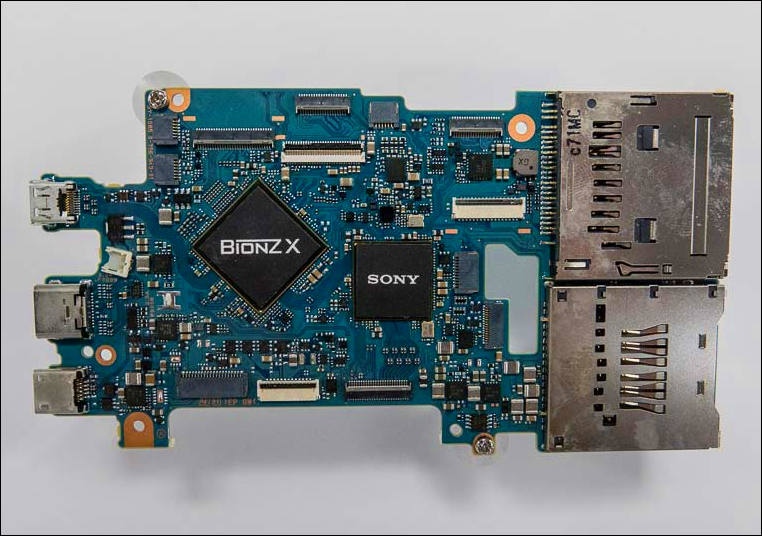
As usual for japan companies, connectors are soldered to main MB, and in this case construction make it even more probable to see damage.
-

 sa210.jpg800 x 531 - 86K
sa210.jpg800 x 531 - 86K -
This girl just imagined that you can do for the price of A7RIII

http://www.imaging-resource.com/PRODS/sony-a7r-iii/sony-a7r-iiiA.HTM

 sa218.jpg800 x 546 - 79K
sa218.jpg800 x 546 - 79K
Howdy, Stranger!
It looks like you're new here. If you want to get involved, click one of these buttons!
Categories
- Topics List23,965
- Blog5,723
- General and News1,343
- Hacks and Patches1,151
- ↳ Top Settings33
- ↳ Beginners254
- ↳ Archives402
- ↳ Hacks News and Development56
- Cameras2,361
- ↳ Panasonic990
- ↳ Canon118
- ↳ Sony154
- ↳ Nikon96
- ↳ Pentax and Samsung70
- ↳ Olympus and Fujifilm99
- ↳ Compacts and Camcorders299
- ↳ Smartphones for video97
- ↳ Pro Video Cameras191
- ↳ BlackMagic and other raw cameras121
- Skill1,961
- ↳ Business and distribution66
- ↳ Preparation, scripts and legal38
- ↳ Art149
- ↳ Import, Convert, Exporting291
- ↳ Editors191
- ↳ Effects and stunts115
- ↳ Color grading197
- ↳ Sound and Music280
- ↳ Lighting96
- ↳ Software and storage tips267
- Gear5,414
- ↳ Filters, Adapters, Matte boxes344
- ↳ Lenses1,579
- ↳ Follow focus and gears93
- ↳ Sound498
- ↳ Lighting gear314
- ↳ Camera movement230
- ↳ Gimbals and copters302
- ↳ Rigs and related stuff272
- ↳ Power solutions83
- ↳ Monitors and viewfinders339
- ↳ Tripods and fluid heads139
- ↳ Storage286
- ↳ Computers and studio gear560
- ↳ VR and 3D248
- Showcase1,859
- Marketplace2,834
- Offtopic1,319



